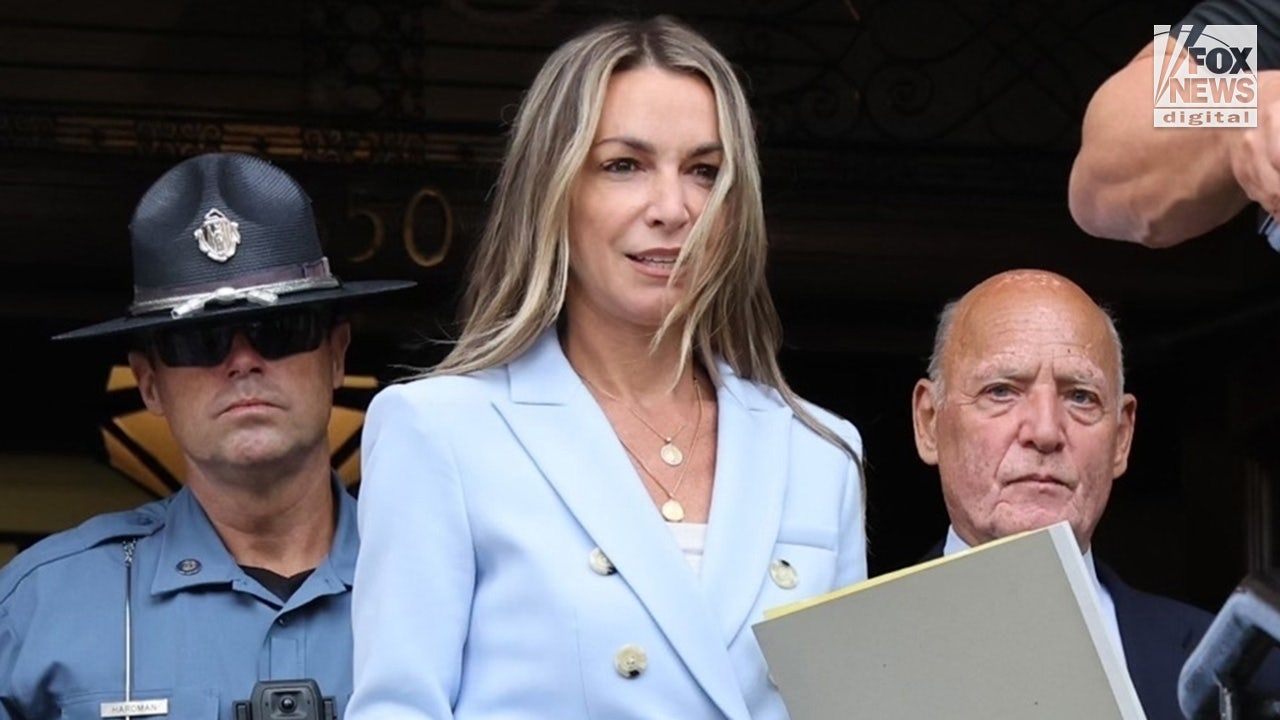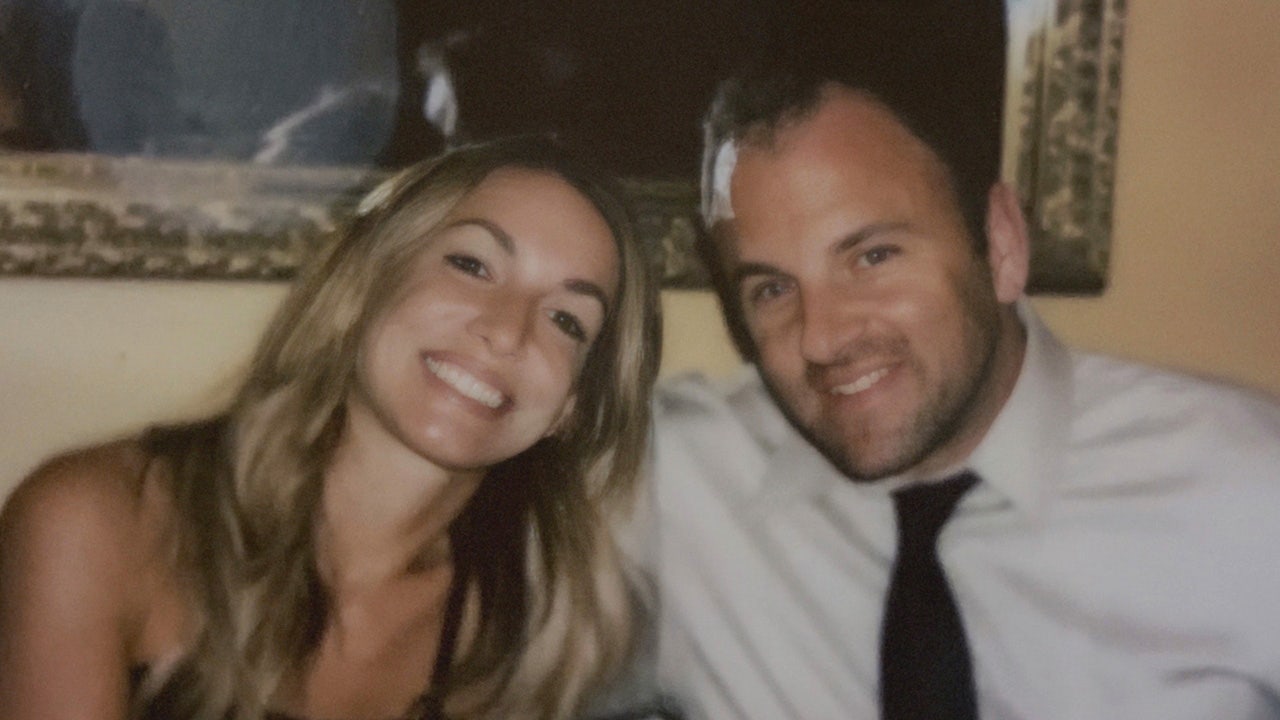Karen Read Case: Updates & Developments In The Cop's Death Case
Did Karen Read intentionally kill Boston Police Officer John OKeefe, or is she the victim of a monumental miscarriage of justice? This question has consumed public attention and legal minds, with the answers shrouded in conflicting narratives and a trial fraught with twists and turns, ultimately ending in a mistrial and the lingering specter of doubt.
The somber atmosphere of Braintree, Massachusetts, was pierced by the echoes of grief as hundreds of mourners gathered to pay their respects at the funeral for Boston Police Officer John O'Keefe. The loss of O'Keefe sent shockwaves through the community, but the circumstances surrounding his death quickly became the subject of intense scrutiny. Karen Read, O'Keefe's girlfriend at the time, found herself at the center of the investigation, accused of intentionally hitting him with her SUV and leaving him to die in a blizzard in the early morning hours of January 29, 2022. The details of that night, the events leading up to it, and the subsequent legal battles have captured the attention of the public and media alike.
| Category | Details |
|---|---|
| Full Name | John O'Keefe |
| Date of Birth | (Information not publicly available) |
| Date of Death | January 29, 2022 |
| Place of Death | Canton, Massachusetts |
| Occupation | Boston Police Officer |
| Education | (Information not publicly available) |
| Known For | Being a Boston Police Officer and the victim in the Karen Read case. |
| Relationship | Boyfriend of Karen Read |
| Reference | Boston.com |
The legal proceedings have been anything but straightforward. Karen Read, now 44 years old, was first tried on charges of second-degree murder and two other counts. She faced the accusation of deliberately backing her vehicle into OKeefe and leaving him in the midst of a harsh New England blizzard. The initial trial, however, ended in a mistrial, leaving the case in a state of uncertainty. The defense, led by attorneys like David Yannetti and Alan Jackson, argued that Read had dropped OKeefe off at the residence of another Boston Police officer, Brian Albert, and that OKeefe's death was the result of something other than Read's actions.
- Exploring The Zzz Miyabi Element A Comprehensive Guide
- Is Amy Shira Teitel Single Exploring The Life And Relationship Status Of This Renowned Space Historian
The courtroom drama, held at Norfolk Superior Court in Dedham, Massachusetts, has been punctuated by moments of high tension and unexpected developments. On June 24th, Karen Read was seen arriving at the courthouse with her father, William Read, as she prepared for her second trial. Judge Beverly Cannone presided over the case, her presence marked by a dramatic courtroom outburst and visible tremors, revealing a potential scandal concerning the defense team's communication with expert witnesses. The judge's reaction underscored the intensity and complexity of the case, signaling the high stakes involved.
A key aspect of the defense's strategy revolved around questioning the credibility of witnesses and the handling of evidence. The defense repeatedly sparred with a key witness who had been with Read on the morning OKeefe was found, attempting to cast doubt on her testimony. They also alleged misdirections by the prosecution, citing specific instances where they believed misleading statements were made during arguments. These tactics were aimed at creating reasonable doubt in the minds of the jury, a crucial element in any murder trial.
The investigation itself came under scrutiny. The lead investigator in the case was fired after a disciplinary board found he had sent sexist and crude texts about Karen Read to his family and colleagues. This revelation fueled the defense's claims of a biased investigation and a potential cover-up, further complicating the narrative.
- Salahbrooks The Rise Of A Digital Sensation
- Chris Combs Net Worth A Comprehensive Insight Into His Wealth
The events of that fateful night, January 29, 2022, have been dissected and debated. O'Keefe was found dead outside the home of Brian Albert in Canton, Massachusetts, after a night of heavy drinking. Read claimed she had dropped him off there. The defense maintained this, pointing out that O'Keefe was last seen at the Albert residence, and Read had not heard from him since. The prosecution, however, sought to prove that Read had intentionally hit OKeefe with her SUV, leading to his death. This central contention formed the basis of the charges against her.
The case has garnered intense media coverage, with reporters and spectators flocking to the courthouse. Supporters of Karen Read, along with those simply interested in the trial, could often be seen gathered near the courthouse, with some following the trial proceedings closely.
Photographs from the trial offer a glimpse into the emotional weight of the proceedings. Karen Read, often seen in court, maintained a stoic demeanor, though images captured moments of emotion, particularly during jury deliberations and when the mistrial was declared. Defense attorneys, including David Yannetti and Alan Jackson, were also frequently photographed as they strategized and presented their case.
The jury's role in this case was paramount. Jurors visited the Canton neighborhood where O'Keefe's body was found, allowing them to see the scene firsthand and assess the claims of both the prosecution and the defense. Ultimately, the jury was unable to reach a unanimous verdict, leading to the mistrial.
After the mistrial, both sides were scheduled to return to court on July 22nd to consider the next steps. The future of the case remains uncertain, with the possibility of a retrial hanging in the balance. The unanswered questions surrounding John O'Keefe's death continue to linger, and the public's interest remains undiminished.
The case highlights the complex intersection of law, emotion, and public perception. It is a stark reminder of the human cost of tragedy and the pursuit of justice. The outcome of any future proceedings will have significant implications not only for Karen Read but also for the community and the integrity of the legal process.
The defense team's claims of misdirections and potential biases within the investigation have raised significant questions about the fairness of the proceedings. The dramatic courtroom outburst and the firing of the lead investigator add layers of complexity to the narrative. The defense's primary objective was to sow doubt in the jury's mind, and the mistrial suggests they were at least partially successful in this endeavor. The evidence presented, including the timeline of events, the claims of a cover-up, and the testimonies of witnesses, was rigorously examined.
The prosecutions arguments rested on establishing Reads guilt, arguing that she intentionally used her SUV as a weapon. Their efforts to portray her actions and motivations were closely scrutinized. The case has seen many twists, adding to the public's fascination with the intricacies of the legal battle.
The case's evolution has brought the media and the public closer, observing the proceedings' every phase. From the initial investigation to the mistrial, the details of this case have been disseminated and dissected in an attempt to understand what truly happened on that fateful January night. The conflicting accounts, the circumstantial evidence, and the emotional weight of the situation have all played a part in the ongoing legal battle. The questions surrounding who killed John O'Keefe continue to capture the public's imagination, making this a case that will likely be remembered for years to come.
The fact that jurors visited the location in Canton where O'Keefe's body was found reveals the importance of the evidence and details from the scene. The scene holds a pivotal role in understanding the sequence of events that led to the death of the police officer. Furthermore, the presence of expert witnesses, the testimonies, and the courtroom dynamics all added complexity to the proceedings. The court's examination of the details has been critical in determining what happened on that fateful night.
The defense's strategy has been to challenge the prosecution's narrative and establish doubt surrounding Read's culpability. This tactic is common in murder trials, where the burden of proof lies with the prosecution to show, beyond a reasonable doubt, that the accused committed the crime. The defense's attempts to raise questions about witness credibility and the investigative procedures have been pivotal in undermining the prosecution's arguments.
The case of Karen Read is not just about a specific crime; it encapsulates the broader concepts of justice, guilt, and the burden of proof within the American legal system. The case continues to generate controversy and debate as it unfolds, which has put the legal process under the public spotlight.
The legal team has been working tirelessly to create a robust defense, attempting to provide the most robust defense possible. This has included reviewing evidence, collecting witness testimonies, and preparing for court appearances. The success or failure of Read's legal defense will have far-reaching implications, and the public will closely watch the court proceedings.



Detail Author:
- Name : Gwendolyn Toy
- Username : thora.pfeffer
- Email : jerod60@yahoo.com
- Birthdate : 1982-07-01
- Address : 23387 Jacobi Coves East Orval, OK 22438-9250
- Phone : +1-304-238-7193
- Company : Klein, Rau and Hermiston
- Job : Industrial-Organizational Psychologist
- Bio : Occaecati fuga suscipit omnis dolor vel velit sint nostrum. Et cupiditate quibusdam accusamus blanditiis. Sequi sapiente corporis eos commodi dolorum error magni.
Socials
instagram:
- url : https://instagram.com/balistreria
- username : balistreria
- bio : Nam dolore rerum ex dolor delectus fuga. Assumenda et nam voluptatem soluta ab quia.
- followers : 2295
- following : 352
linkedin:
- url : https://linkedin.com/in/balistreria
- username : balistreria
- bio : Blanditiis eius voluptates porro quasi.
- followers : 1345
- following : 256
twitter:
- url : https://twitter.com/adell.balistreri
- username : adell.balistreri
- bio : Voluptatem qui ratione adipisci. Ipsam vel dicta placeat quaerat. Est quo voluptatem facilis laudantium repellat et consequatur.
- followers : 5128
- following : 11
facebook:
- url : https://facebook.com/adellbalistreri
- username : adellbalistreri
- bio : Doloremque illo neque quia atque et aliquid mollitia nostrum.
- followers : 4628
- following : 1998